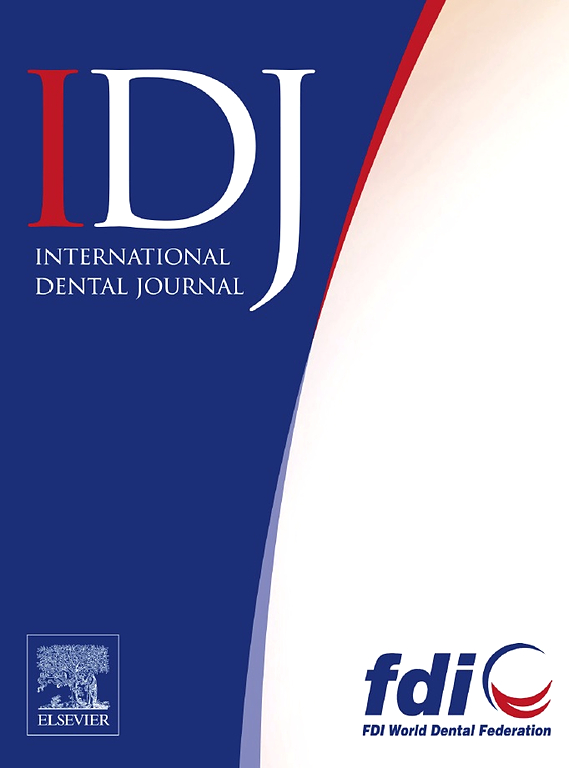Genetic Determinants of Leukocyte Count in Nonsyndromic Cleft Lip With or Without Cleft Palate Among Asians
IF 3.2
3区 医学
Q1 DENTISTRY, ORAL SURGERY & MEDICINE
引用次数: 0
Abstract
Objectives
Previous studies have shown that maternal proinflammatory status could increase the risk of nonsyndromic cleft lip with or without cleft palate (NSCL/P) in offspring. This study aimed to assess the relationship between leukocyte counts and NSCL/P.
Methods
The NSCL/P genome-wide association study (GWAS) data with a total of 1069 cases and 1724 controls were included. Summary statistics for 6 leukocyte counts GWASs (white blood cell count (WBC), neutrophil count (NC), monocyte count (MONO), lymphocyte count (LYM), eosinophil count (EOS), and basophil count (BASO)) in large-scale East Asian populations were obtained from the IEU OpenGWAS database. Genetic association analyses include genetic correlations and genetic overlaps of traits. Multi-trait analysis was used to identify pleiotropic loci, followed by enrichment analysis for pleiotropic genes. Mendelian Randomization (MR) analysis was performed to infer causality between exposure factors and NSCL/P.
Results
We observed a significant global genetic correlation between WBC and NSCL/P (rg = 0.14, P = 6.90E-03), as well as genetic overlap in 5 trait pairs of NSCL/P and WBC, NC, MONO, LYM, and BASO. Subsequently, we found 24 pleiotropic loci across these pairs, with the strongest pleiotropy in the genetic region 17q21.1 mapped to GSDMA. Notably, pleiotropic genes were enriched in the MHC protein complex, antigen processing and presentation, and bone cell development. In addition, MR analysis demonstrated that higher neutrophil counts significantly increased the risk of NSCL/P (odds ratio = 2.48, P = 5.41E-3), an effect that persisted in multivariable MR analyses (P = 1.33E-3) after adjusting for other inflammatory cell types.
Conclusion
Our study revealed genetic correlations and shared pleiotropic loci between leukocyte counts and NSCL/P, with further evidence suggesting a potential causal relationship between neutrophil counts and NSCL/P.
Clinical Relevance
High neutrophil cell counts showed a potential causal association with NSCL/P pathogenesis, suggesting an increased risk of disease development.
亚洲人伴或不伴腭裂非综合征性唇裂白细胞计数的遗传决定因素
目的以往的研究表明,母亲的促炎状态可增加后代非综合征性唇裂伴或不伴腭裂(NSCL/P)的风险。本研究旨在评估白细胞计数与NSCL/P之间的关系。方法纳入NSCL/P全基因组关联研究(GWAS)数据,共1069例,对照组1724例。从IEU OpenGWAS数据库中获得了东亚大规模人群中6种白细胞计数GWASs(白细胞计数(WBC)、中性粒细胞计数(NC)、单核细胞计数(MONO)、淋巴细胞计数(LYM)、嗜酸性粒细胞计数(EOS)和嗜碱性粒细胞计数(BASO))的汇总统计数据。遗传关联分析包括性状的遗传相关和遗传重叠。利用多性状分析鉴定多效性位点,对多效性基因进行富集分析。采用孟德尔随机化(MR)分析来推断暴露因素与nsl /P之间的因果关系。结果WBC与NSCL/P存在显著的遗传相关性(rg = 0.14, P = 6.90E-03), NSCL/P与WBC、NC、MONO、LYM、BASO等5个性状对存在遗传重叠。随后,我们在这些基因对中发现了24个多效性位点,其中遗传区域17q21.1与GSDMA的多效性最强。值得注意的是,多效性基因在MHC蛋白复合物、抗原加工和呈递以及骨细胞发育中富集。此外,MR分析表明,较高的中性粒细胞计数显著增加NSCL/P的风险(优势比= 2.48,P = 5.41E-3),在调整其他炎症细胞类型后,多变量MR分析中持续存在这种效应(P = 1.33E-3)。结论我们的研究揭示了白细胞计数与NSCL/P之间的遗传相关性和共享的多效位点,进一步的证据表明中性粒细胞计数与NSCL/P之间存在潜在的因果关系。高中性粒细胞计数显示与nsl /P发病机制有潜在的因果关系,提示疾病发展的风险增加。
本文章由计算机程序翻译,如有差异,请以英文原文为准。
求助全文
约1分钟内获得全文
求助全文
来源期刊

International dental journal
医学-牙科与口腔外科
CiteScore
4.80
自引率
6.10%
发文量
159
审稿时长
63 days
期刊介绍:
The International Dental Journal features peer-reviewed, scientific articles relevant to international oral health issues, as well as practical, informative articles aimed at clinicians.
 求助内容:
求助内容: 应助结果提醒方式:
应助结果提醒方式:


